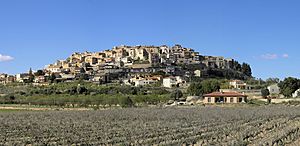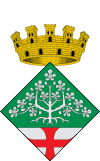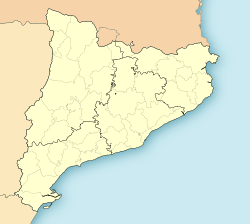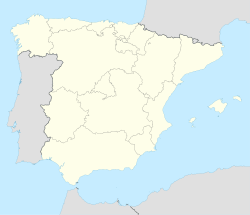Horta de Sant Joan facts for kids
Quick facts for kids
Horta de Sant Joan
|
|||
|---|---|---|---|
|
Municipality
|
|||

Horta de Sant Joan
|
|||
|
|||
| Country | |||
| Autonomous community | |||
| Province | Tarragona | ||
| Comarca | Terra Alta | ||
| Area | |||
| • Total | 119.0 km2 (45.9 sq mi) | ||
| Elevation | 542 m (1,778 ft) | ||
| Population
(2018)
|
|||
| • Total | 1,146 | ||
| • Density | 9.630/km2 (24.942/sq mi) | ||
| Climate | Csa | ||
Horta de Sant Joan is a small village and municipality in the Terra Alta region of Catalonia, Spain. It's famous because the well-known artist Pablo Picasso spent time here. He even said that he learned a lot about art in this very town!
Contents
A Glimpse into History
Horta de Sant Joan has been a home for people for a very long time. It sits on a small hill with a natural spring nearby. This spring was super important in the past, especially during medieval times. If enemies attacked, the people inside the town still had fresh water.
The first people to live here were the Iberians. Later, the Romans arrived. In the 8th century, like much of Spain, Horta was under Muslim rule. Christians then took control in the 12th century. You can still see olive trees, like the amazing 1,000-year-old Parot, that were planted by the Muslims centuries ago.
Picasso's Connection to Horta
Horta de Sant Joan is the hometown of Manuel Pallarès, who was a close friend of Pablo Picasso. Picasso visited Horta when he was young, around 1897–98, staying with Manuel. He famously said, "Everything I know I learned in Horta."
Picasso returned to Horta in 1909. During this visit, he worked on his Proto-Cubism style of painting. He created many paintings and drawings during both his stays. Today, there's a special place called the Centro Picasso (Picasso Center). It holds art shows, talks, and publishes books about the artist. There's also an Eco-Museum of the Natural Park of the Ports, which is a great place to learn about the local nature.
Exploring the Geography
Horta de Sant Joan, sometimes called Orta, is built on a hill. From here, you can see beautiful views of the mountains known as the Ports of Beceite. At the foot of Santa Barbara Mountain, you'll find the Saint Salvador d'Horta monastery, also known as the Convent of Angels.
Amazing Rock Formations
Within Horta de Sant Joan's area, you can find unique rock formations called Benet's Rocks. These rocks are a very special part of the mountain range's scenery. One of the three large rock shapes looks like a "Dog's Head" when you see it from the side.
Natural Park and Rivers
A big part of Horta de Sant Joan is inside the Natural Park of the Ports of Beseite. Outside the park, the land is mostly used for farming. You'll see many olive, almond, and fruit trees, as well as vineyards.
Three main rivers flow through the area around Horta. The Algars river is to the west and forms the border between Catalonia and Aragon. The Estrets river is also to the west and flows into the Algars. The Canaletes river is to the north and later joins the Ebro, which is the largest river in Spain.
Understanding the Climate
Horta de Sant Joan has an Interior Mediterranean climate. This means it has very cold winters and extremely hot summers. The nearby Ports Mountain range helps the area by trapping cooler sea air from the coast. This brings a natural "air conditioning" effect in the evenings during summer, thanks to winds from the east called the Garbi.
Local Economy
Because of the natural park surrounding it, Horta's economy mainly relies on farming. Tourism is also a big part of the economy, with many visitors coming to enjoy the beautiful nature and learn about Picasso.
Notable people
- Gerard Badía (born 18 October 1989), Spanish footballer
See also
 In Spanish: Horta de San Juan para niños
In Spanish: Horta de San Juan para niños





